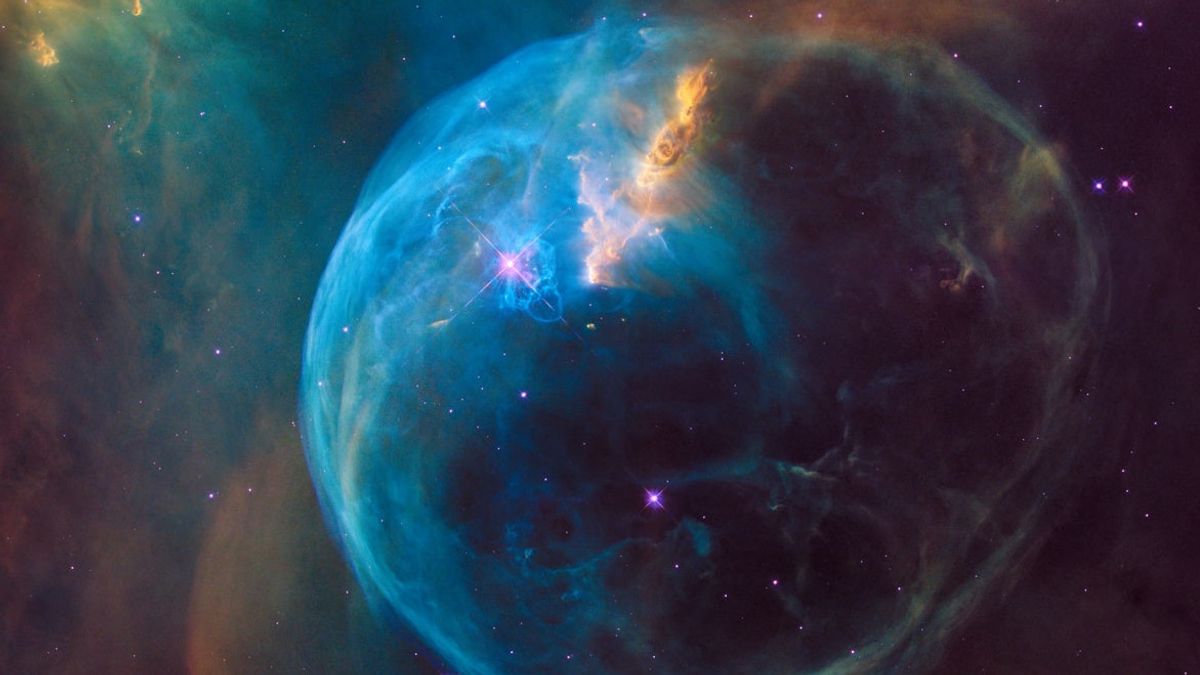
JAKARTA - Astronomers hunting for exoplanets, or planets around other star systems, have just spotted a tiny world dubbed the planet GJ 367 b, which is about half the mass of Earth.
Among the lightest exoplanets discovered to date, GJ 367 b orbits its parent star in 7.7 hours and is extremely dense, apparently made of nearly pure iron.
Also called "super-Mercury" because of its location and composition, and the existence of this light entity challenges aspects of planetary formation theory. GJ 367 b could be a hint that mini-worlds come in a much wider variety than previously believed.
GJ 367 b orbits a cool red dwarf about 31 light-years from Earth. The size itself is slightly larger than Mars with a diameter of 5,500 miles.
"We already know some of them, but their origins are currently unknown. By measuring the precise nature of the planetary USP (ultra-short period), we can get a glimpse of the system's formation and evolutionary history", said study co-author Kristine WF. Lam, from the Institute of Planetary Research at the German Aerospace Center.
Lam and colleagues discovered the planet GJ 367 b using data collected by NASA's Transiting Exoplanet Survey Satellite (TESS) and launched it into Earth orbit in April 2018.
TESS hunts for planets using the transit method, noting the small brightness dips caused when a world crosses its star face from the spacecraft's perspective.
Astronomers noticed such a dip in TESS observations of the red dwarf GJ 367 b, which is about half the width of the Sun, later confirming that the signal was caused by a transiting planet.
SEE ALSO:
TESS observations revealed GJ 367 b's super-short orbital period, as well as its size relative to the parent star. The researchers further characterized the planet with the help of the High Accuracy Radial Velocity Planet Searcher (HARPS), an instrument mounted on the European Southern Observatory's 3.6-meter telescope in Chile.
The HARPS measurements show how much GJ 367 b is pulling on its host star, which allowed the research team to calculate the exoplanet's mass. Combining the various observations allowed astronomers to determine just how densely packed GJ 367 b is, which is higher than Earth.
"The high density suggests this planet is dominated by an iron core. These properties are similar to Mercury, with a disproportionately large iron and nickel core that distinguishes it from other terrestrial bodies in the Solar System", Lam said.
That means the planet GJ 367 b is not a good candidate to host life like Earth. Due to its extreme proximity to its host star, the planet is blown up by stellar radiation, absorbing about 500 times the amount that Earth receives from the Sun.
Astronomers say that if GJ 367 b ever had a substantial atmosphere, it would almost certainly have been lost to space long ago. And the planet is likely tidally locked, always showing the same face as its parent star. The temperature itself reaches up to 2,700 degrees Fahrenheit (1,500 degrees Celsius) on a hot day.
Unfortunately, astronomers are not clear on how GJ 376b formed, but several different scenarios can explain its structure and composition.
"For example, it might be possible for this planet to form from iron-rich building blocks, or GJ 376b might be the remnant of a larger planet, most of which was eroded by stellar radiation or a giant impact", Lam explained.
"If this planet is a remnant core of a previous gas planet, then the gas planet should be no bigger than a Neptune-sized planet", he added.
The English, Chinese, Japanese, Arabic, and French versions are automatically generated by the AI. So there may still be inaccuracies in translating, please always see Indonesian as our main language. (system supported by DigitalSiber.id)















